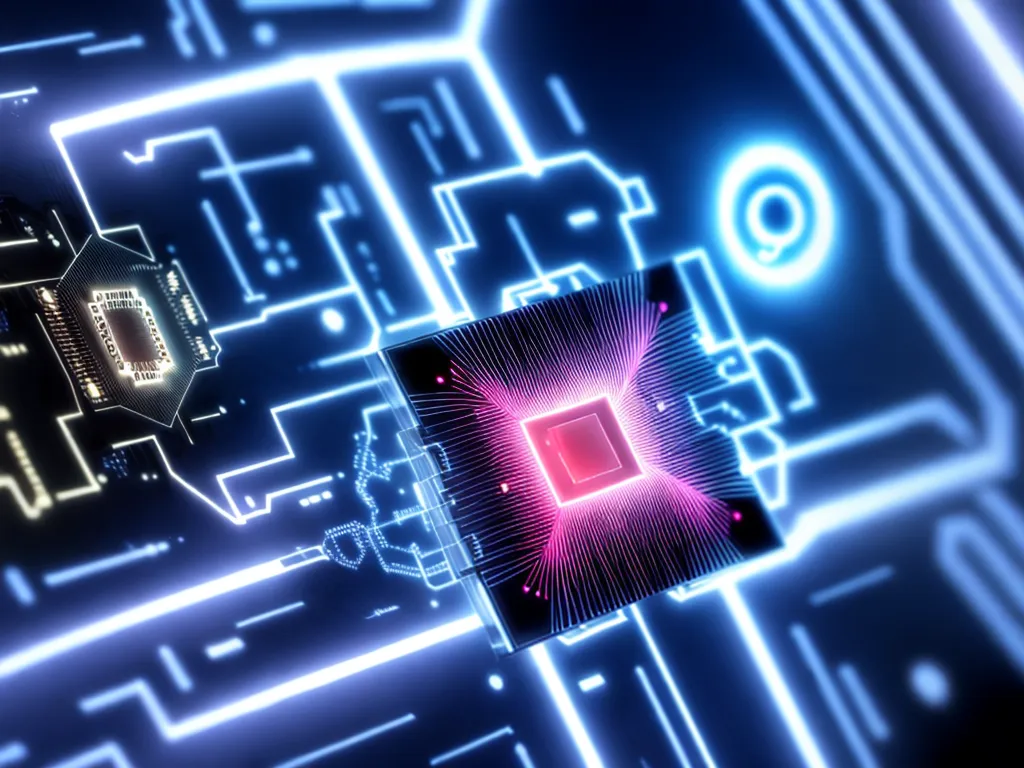
Quantum Computing: Preparing for the Security Implications
Introduction
Quantum computing is an emerging field that utilizes the strange properties of quantum physics to perform computations in radically different ways compared to classical computing. While quantum computing promises to enable new breakthroughs in fields like chemistry, material science, and machine learning, it also poses unique security risks that must be addressed. In this article, I will provide an in-depth look at the security implications of quantum computing and how we can prepare for them.
The Threat Quantum Computers Pose to Encryption
One of the biggest concerns regarding quantum computing is its ability to break current encryption standards. Many widely used encryption methods like RSA and ECC rely on the difficulty of factoring large prime numbers. However, quantum computers can utilize Shor’s algorithm to factor numbers exponentially faster than classical computers.
This means that much of our current public key infrastructure for securing communications and authenticating users could be rendered insecure once largescale quantum computers exist. Quantum computers threaten the security of digital communications, financial systems, identity management, and more.
To highlight the scale of this threat, experts estimate that a quantum computer capable of breaking RSA-2048 encryption could be built within the next 10-30 years. Once quantum computers reach this capability, they could feasibly decrypt historical encrypted communications and data. This is why quantum computing poses such an urgent cybersecurity risk.
Post-Quantum Cryptography
To mitigate the risks quantum computing poses to encryption, researchers have been working on developing so-called “post-quantum” cryptography. Post-quantum crypto aims to create encryption methods that are secure against attacks from both classical and quantum computers.
Some examples of post-quantum encryption algorithms include:
- Lattice-based cryptography – Relies on the hardness of finding short vectors in lattices.
- Code-based cryptography – Uses error-correcting codes.
- Multivariate polynomial cryptography – Involves systems of polynomial equations.
The National Institute of Standards and Technology (NIST) has been running a post-quantum cryptography standardization process to evaluate and select the most promising post-quantum algorithms. The plan is to have the new standards ready before largescale quantum computers emerge.
Migrating to post-quantum cryptography will require updating software, protocols, and infrastructure across many industries. This will be a major undertaking, so starting the transition now is critical.
Quantum Cryptanalysis
In addition to breaking current encryption schemes, quantum computing also enables new forms of cryptanalysis. Quantum algorithms like Grover’s algorithm and quantum Fourier transforms can provide quadratic and exponential speedups for tasks like searches, optimization problems, and pattern matching.
This means quantum computers could accelerate techniques like:
- Brute force attacks – Trying every possible password or key.
- Frequency analysis – Analyzing the frequency of letters or symbols.
- Pattern matching – Finding similarities across large datasets.
Together, these approaches can be used to crack encryption keys and passwords at unprecedented speeds.
To defend against quantum cryptanalysis, systems need to utilize longer key lengths, new protocols, and additional obfuscation mechanisms. Legacy systems with outdated designs are most at risk.
Quantum Key Distribution
While quantum computing threatens traditional encryption, quantum physics also allows for new forms of secure communication. Quantum key distribution (QKD) uses quantum physics properties to generate and share random encryption keys.
With QKD, the act of measuring a quantum state will disturb it if an unauthorized party tries to intercept the key exchange. This allows communicating parties to detect eavesdroppers.
QKD has some attractive properties like:
- Provides theoretical unbreakability based on quantum physics.
- Enables the detection of tampering.
- Offers perfect forward secrecy since new keys are always generated per session.
However, there are some challenges with real-world QKD:
- Requires dedicated infrastructure like fiber links.
- Operates over limited distances.
- Susceptible to side-channel attacks.
While QKD has its limitations, it offers a unique tool for strengthening encryption in the post-quantum era, especially for high-value communications.
Conclusion
The emergence of quantum computing could fundamentally disrupt modern cryptography and cybersecurity. To prepare for this, we need to ramp up efforts around post-quantum cryptography, re-evaluate our encryption methods and key lengths, strengthen anti-cryptanalysis defenses, and invest in technologies like QKD. Adopting a proactive and layered approach now will put us in a much better position to weather the security impacts as quantum computers come online.












